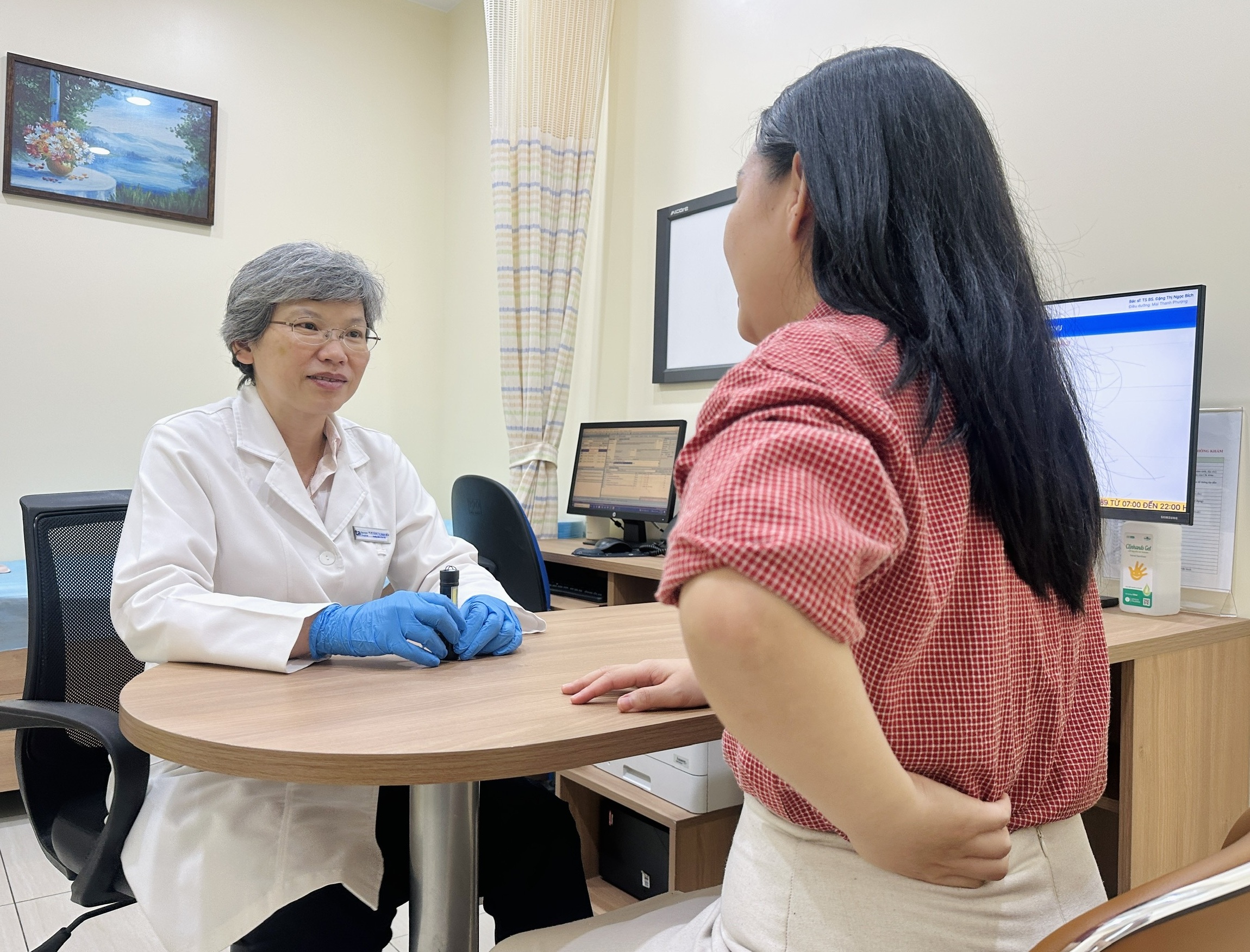A year ago, Tam noticed a small, pea-sized cyst on her back. It was neither painful nor inflamed. Recently, the cyst grew rapidly, becoming swollen, red, and raised. Following a folk remedy, she tied a strand of hair tightly around the base of the cyst, hoping it would fall off. After a few weeks, the surrounding skin became red and inflamed, the cyst swelled further, causing pain and oozing. Tam then sought treatment at Tam Anh General Hospital in Ho Chi Minh City.
 |
Tam's infected sebaceous cyst after being tied with hair. Photo: *Tam Anh General Hospital* |
Doctor Dang Thi Ngoc Bich, Head of the Dermatology - Cosmetic Dermatology Department, diagnosed Tam with an infected sebaceous cyst, a common type of benign cyst that typically appears on the back, neck, and face. Doctor Bich explained that these cysts are not dangerous if treated correctly.
"Tying hair or string tightly around a cyst can restrict blood supply, leading to inflammation, ulcers, infection, and even extensive necrosis, especially in the head and neck area where there are many important blood vessels," Doctor Bich stated, adding that benign cysts like sebaceous cysts, epidermoid cysts, and lipomas can be easily removed through minor surgery under sterile conditions.
The cyst on Tam's back was approximately 1.5 cm in size and had several blood vessels feeding it. Therefore, the doctor used electrocautery to both remove the cyst and control bleeding, ensuring the patient's safety. After the minor surgery, the cyst dried up and gradually peeled off. The wound is healing well without any raised or dark scars.
 |
Doctor Bich consults with Tam about treatment options. Photo: *Tam Anh General Hospital* |
Doctor Bich noted that many people believe skin conditions are minor and will resolve on their own. As a result, they often resort to home remedies such as applying leaves, scraping, or tying hair around the affected area, or using topical medications of unknown origin. These practices can complicate the skin condition. For example, prolonged use of topical corticosteroids can cause skin thinning, atrophy, hyperpigmentation, or widespread fungal infections, requiring more complex interventions.
Doctor Bich advises that if any unusual skin symptoms appear, such as redness, itching, burning, scaling, unusual lumps, swelling, pain, or non-healing sores, individuals should seek medical attention for proper treatment to prevent complications.
Minh Huong
*The patient's name has been changed.












